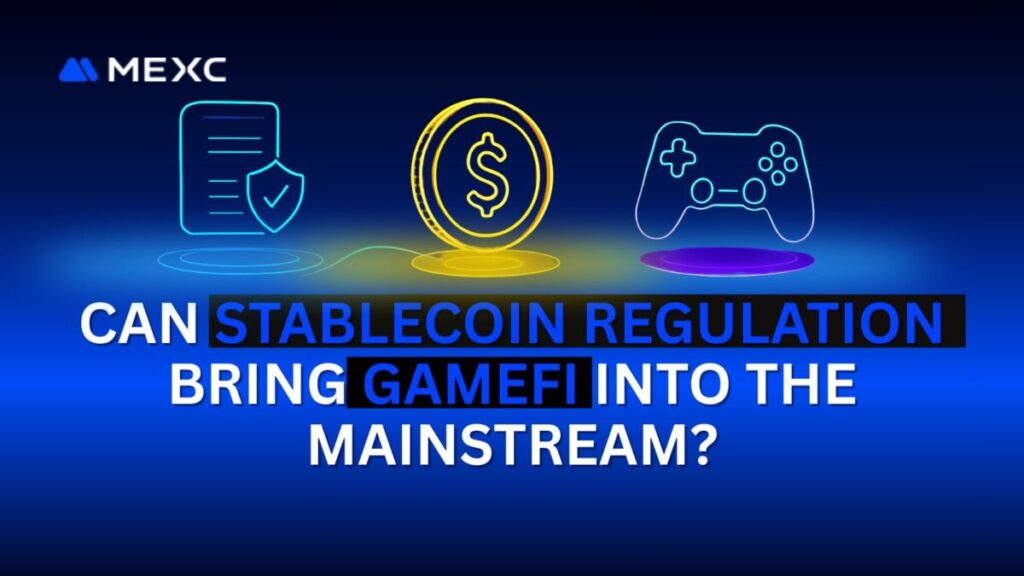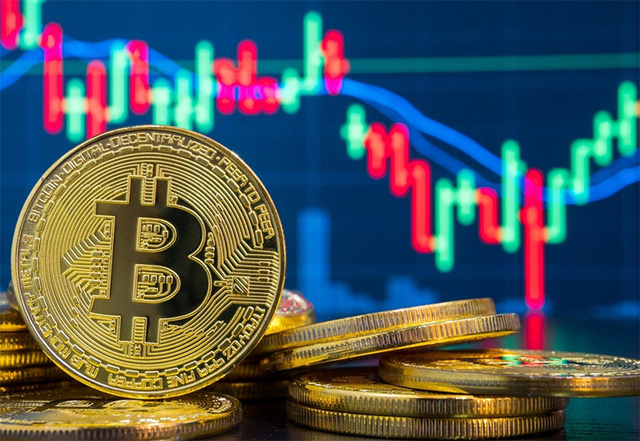
Key Highlights
- Regulatory Shift: U.S. stablecoin legislation is setting clearer frameworks for issuers, creating trust in fiat-backed rails.
- USDC as the Bridge: Circle’s USDC is emerging as a regulated settlement layer for in-game and sports microtransactions.
- Sports + GameFi Growth: NFT ticketing, fantasy leagues, esports rewards, and fan engagement can thrive under stable payment rails.
- Token Economics Upgrade: Regulatory clarity provides sustainable pathways beyond hype-driven, inflationary token models.
- Mainstream Readiness: Clearer rules allow GameFi platforms to target traditional gamers, sports fans, and institutional partners.
1.Introduction: Why Stablecoin Regulation Matters for GameFi + Sports Economy
GameFi (gaming + decentralized finance) and the sports economy share a common challenge: they thrive on microtransactions, but lack a frictionless, trusted settlement layer. Whether it’s buying an in-game skin, wagering on a fantasy league, or receiving esports prize money, the need for instant, low-cost, and stable payments is central.
Until recently, crypto-native tokens like ETH, BNB, or SOL were used in these ecosystems. While innovative, they introduced volatility risks. A token used for a $2 microtransaction might swing wildly in value the next day, undermining user trust.
Stablecoins promised a solution, but without regulatory clarity, institutions and mainstream users hesitated. In the U.S., new rules now define how stablecoins should be issued, backed, and audited. This regulatory clarity creates the missing trust layer for global adoption.
For GameFi, this means moving beyond speculative token economies into real entertainment ecosystems powered by regulated, dollar-backed rails. For the sports industry, it could mean a leap from experimental fan tokens into trusted digital fan economies.
2.Stablecoin Regulation in the U.S.
The U.S. has taken a gradual but significant step toward regulating stablecoins. Proposals and bills debated in Congress focus on:
- Issuance Rules: Only approved entities (banks, licensed trust companies, or regulated issuers like Circle) can mint fiat-backed stablecoins.
- Reserves & Transparency: Every token must be backed 1:1 by fiat or highly liquid assets, with mandatory audits.
- Compliance Obligations: Stablecoin issuers must comply with anti-money laundering (AML) and know-your-customer (KYC) rules.
- Operational Guardrails: Standards for consumer protection, redemption rights, and systemic risk management.
2.1 Pathway: Global Precedent
Once the U.S. establishes a standard, it often sets the tone globally. The EU’s MiCA regulation already provides clarity, and Asian markets are closely monitoring U.S. frameworks. For GameFi platforms targeting global audiences, this means stablecoins like USDC become universally accepted rails, not jurisdictionally risky assets.
Regulation is not just compliance overhead, it is a trust multiplier. For gamers and sports fans, this means knowing their $5 USDC in a wallet is truly worth $5 tomorrow.
3.GameFi and Sports Microtransactions Today
3.1 Current State of Play
- High Gas Fees: On Ethereum mainnet, transaction costs often exceed the value of in-game microtransactions.
- Volatility Risk: Tokens used in play-to-earn models (like Axie Infinity’s SLP) collapsed, eroding player trust.
- Poor Fiat Ramps: Many users can’t easily convert winnings or payments into fiat currencies.
- Trust Gaps: Without consumer protection, scams and rug pulls damaged GameFi’s reputation.
3.2 Sports Microtransactions
Sports is fertile ground for blockchain adoption, ticketing, fan tokens, collectible NFTs, and fantasy betting. Yet adoption is fragmented because:
- Teams don’t want exposure to volatile crypto.
- Fans lack easy fiat → crypto conversion.
- Regulators scrutinize gambling-like products.
3.3 Pathway: Current Barriers
These barriers illustrate why stablecoins + regulation matter: they remove the friction of fees, volatility, and mistrust, creating a baseline for mainstream use.
4.Stablecoins as the Bridge
Stablecoins like USDC are uniquely positioned to become the bridge between fiat and GameFi ecosystems.
- USDC Rails: Dollar-backed, audited, and increasingly regulated.
- Base Ecosystem: Coinbase’s Layer-2 solution provides cheap, fast settlement ideal for microtransactions.
- GameFi Integration: Instead of volatile in-game tokens, developers can use USDC as the transaction rail, while still building tokenized reward models on top.
4.1 Pathway: USDC → Base → GameFi & Sports
- Fiat On-Ramp: User buys USDC directly in Coinbase.
- Layer-2 Settlement: Transactions happen cheaply on Base.
- In-Game/Sports Payment: Players and fans pay seamlessly, with no volatility risk.
- Off-Ramp: USDC converts back to fiat instantly when needed.
This creates the invisible crypto experience: the user may not even realize they’re using blockchain, just that payments are fast, cheap, and trustworthy.
5.Case Studies & Examples
- Esports Prize Pools: Stablecoins allow instant distribution of winnings, avoiding delays or banking hurdles.
- Sports Clubs & Ticketing: USDC-backed NFT tickets prevent fraud and simplify resale markets.
- In-Game Assets: Games like Axie or Illuvium could denominate marketplaces in USDC, making purchases feel natural.
- Micro-Betting: Regulated stablecoins enable compliant, real-time micro-bets during live sports events.
These cases show that with stable rails, speculative hype cycles can evolve into sustainable fan and player economies.
6.Token Economics & Liquidity Implications
Regulation changes token design.
- Before Regulation: Tokens often served dual purposes, governance, utility, AND payments, leading to unsustainable inflation.
- After Regulation: Stablecoins take over the payment function, allowing native tokens to focus on governance, staking, and incentives.
6.1 Pathway: Token Model Upgrade
- Payments → USDC
- Governance → Native token
- Yield → Staking/liquidity pools
- Liquidity → Cross-chain USDC settlement
This separates speculation from utility, stabilizing GameFi economies.
7.Challenges & Risks
Regulation introduces both benefits and new risks:
- Compliance Overhead: Smaller developers may struggle with KYC/AML integration.
- Centralization: If only a few regulated issuers dominate, ecosystems risk centralization.
- Jurisdictional Fragmentation: Different rules across the U.S., EU, and Asia may complicate rollout.
- User Privacy: KYC could reduce appeal for anonymous gamers.
7.1 Pathway: Balancing Growth with Compliance
GameFi must adapt, designing systems that remain fun and inclusive, while integrating compliance rails.
8.Future Growth Pathways for Base Ecosystem
- Cross-Chain Settlement: USDC interoperability across chains creates global liquidity.
- DeFi + GameFi Merge: Yield-bearing stablecoins (like tokenized T-bills) could be integrated into games.
- Sports Fan Tokens: Clubs can issue engagement tokens backed by regulated USDC.
- Institutional Entry: Regulatory clarity opens the door for major brands, sponsors, and leagues.
The Base ecosystem becomes the hub where fiat rails meet global on-chain entertainment.
9.Conclusion
Stablecoin regulation marks a turning point. For the first time, sports and GameFi ecosystems can rely on compliant, stable, and liquid rails that are trusted both by users and institutions.
The path forward is clear: USDC on Base becomes the invisible payment layer for millions of gamers and sports fans. Developers can focus on building fun, rewarding, and engaging experiences, while regulation ensures stability and trust.
If done right, stablecoin regulation won’t just stabilize GameFi. It will bring it into the mainstream.
Disclaimer: This content is for educational and reference purposes only and does not constitute any investment advice. Digital asset investments carry high risk. Please evaluate carefully and assume full responsibility for your own decisions.
Join MEXC and Get up to $10,000 Bonus!
Sign Up


